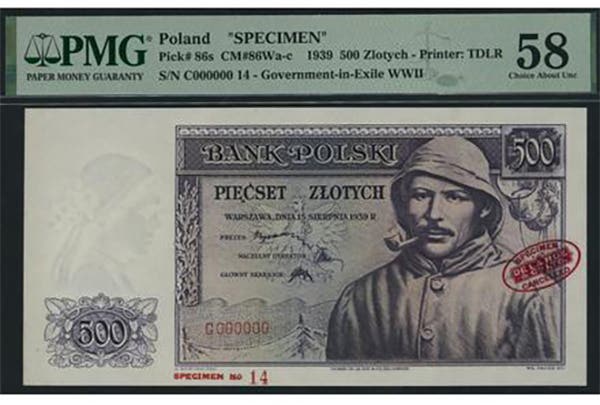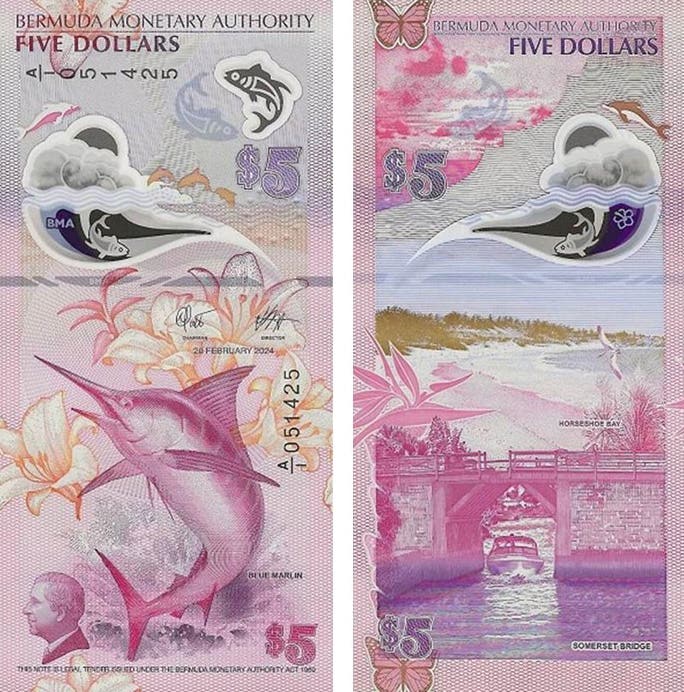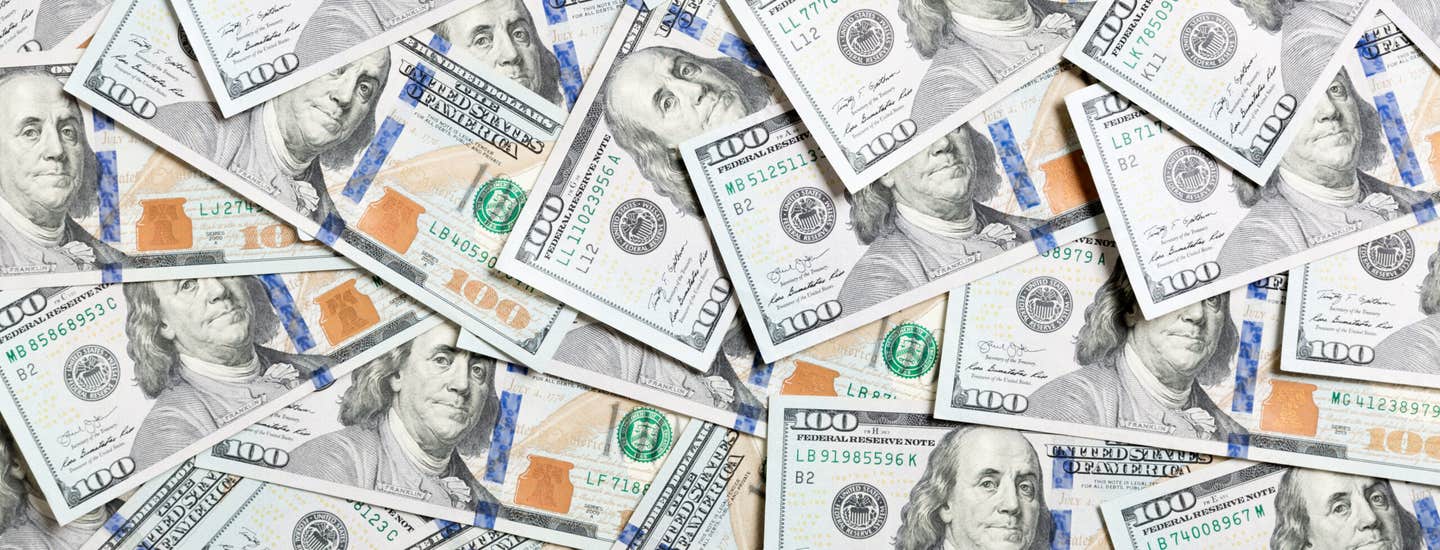Late-Finished Back 470 Discovery
Collector finds the first reported $1 Series of 1935A late-finished back plate 470 from the JC serial number block J97077064C-J4115-470.
Derek Higgins already appears to have made what will be the U.S. small-size variety discovery of 2022. He reeled in the first reported $1 Series of 1935A late-finished back plate 470 from the JC serial number block; namely, J97077064C-J4115-470. The note arrived on Feb. 19, his 32nd birthday—quite the memorable present!
Late-finished 470 $1s rank as the rarest of the late-finished small size varieties with only a handful reported. All the other reported specimens are from the KC block.
Notes bearing back plate serial number 470 were first recognized as odd by Leon Goodman who owned Elgee Coins in New York City and was the Goodman of the Goodman-Schwartz-O’Donnell Standard Handbook of Modern U.S. Paper Money published in 1968. What stood out to Goodman was the peculiar intermediate size of the 470s on the notes, being a bit larger than the micro numbers used on plates of that era. See Figure 2. This, coupled with the fact that notes being printed at the same time bore back plate serial numbers in the 2850 to 3300 range, revealed that there was something special about this plate.
Decades later, Jamie Yakes and I discovered that the plate shared the same origin story as now famous $5 micro back 637. The $5s bearing back 637 are the most avidly sought of small note varieties. A big difference is that the 470 $1s are far rarer!
Back plate 470 was begun on Sept. 1, 1936, as a 12-subject iron electrolytic master plate. It was created through the deposition of iron ions onto an alto—a mold made from an earlier master—that was submerged in an electrolytic bath. The process is similar to that used to chrome plate a car bumper, except in the case of a bumper the ions are chrome and only a thin buildup is applied.
During its life as a master, plate 470 was used to produce altos that in turn were used to make numerous iron electrolytic production plates. No plate serial numbers were etched onto its subjects during this phase of its life.
In due course, it ceased to be used as a master, so it was placed in storage in the plate vault at the Bureau of Engraving and Printing.
During World War II, the BEP actively participated in the nationwide metal conservation and recovery effort to extend metal supplies needed for critical war production. As part of this effort, Bureau personnel went through their plate inventory looking for out-of-service master plates that could be salvaged and fashioned into production plates. Back 470 was thus resurrected in 1943.
At this juncture, an engraver etched plate serial number 470 into its 12 subjects using the number assigned to the plate back in 1936. The BEP had adopted macro plate serial numbers in 1939, but macro numbers were not used. Oddly, just as with $5 back 637, the engraver attempted to mimic the old micro size numbers.
The completion of the plate as a printing plate in 1943 classified it as a late-finished plate. The obvious out-of-character intermediate size plate serial numbers made notes printed from its distinctive, thus creating an unusual collectable variety.
A plate history ledger revealed that the plate was assigned to a production press between May 15 and June 18, 1943. It was canceled June 26, 1943.
The earliest that those backs could have been fed to the face presses would have been a week or two later owing to normal ink curing and drying time. Another similar interval was required for the face inks to cure and dry.
The sheets most likely began to arrive in the numbering division during mid to late June. The serial numbering blocks in production during the period were these.
IC April 24-May 27, 1943
JC May 27-June 24, 1943
KC June 24-September 18, 1943
*A possible as well.
It is unlikely that the first of the 470s could have been numbered in the IC block. However, they certainly arrived for the JC and KC blocks. The serial on Derek’s note was numbered during the fourth week of June 1943.
O’Donnel (1977, p. 20) claimed that 2,402,700 notes (200,225 sheets) were printed from the plate based on a subsequently discarded plate record card. All of us have used O’Donnell’s totals ever since but there is an obvious bust in them.
The plate was assigned to a press for only 35 days implying that 5,720 sheets per day were produced assuming the plate was being used 7 days per week. This number is impossible. Typical average production from such a plate was less than 1,000 sheets per day then, often half that.
An on-going problem with O’Donnell’s 470 total is that the survival rate of the notes is simply far too small from a 2,402,700 printing. I am inclined to believe that actual production was a tenth or less of O’Donnell’s number.
The current census of reported specimens is this.
J97077064C J4115/470 vg Higgins
K12724716C L4998/470 vf-xf Heritage FUN Jan 2006
K20895154C J4115/470 xf Heritage Sep 2021
K20895155C K4115/470 xf O’Donnell catalo
K20895156C L4115/470 xf O’Donnell catalog
Tom Denly wrote to me about a decade ago advising that he had found a circulated 470, but I didn’t obtain the serial from it.
The most fun and most challenging small size $1s to collect by block are the Series of 1935A silver certificates. The series includes Hawaii, North Africa, and R & S experimental paper varieties, and even a second group of paper experimentals that were printed early out-of-sequence in the XB, YB and ZB blocks. Added are an extensive group of mule varieties at the beginning of the series. The exotic late-finished 470 backs simply pile on by adding two or three more virtually impossible to find block varieties.
A few people tackled block sets from the Series of 1935A back in the 1960s when I began collecting. In those days, the notes were available in quantity and cheap. I never heard of anyone completing a set of all the known serial number blocks by variety. My count of them is now 111. A handful of diehards are still pursuing the set.
Derek’s oddesy into paper money had an unusual twist. He started in coins as a boy when his grandmother gave him some coins that his grandfather brought home from WWII. His first paper money purchase consisted of a $1 1935A Hawaii and $1 1918 Chicago FRN. Through serendipity, he happened to take the album containing his budding currency collection to his college dorm the week before his folk’s home burned down in 2011. The coins were gone, so he focused on paper.
He particularly pursues U.S. small size varieties and has concentrated on a block set of 1935-1975 SCs. The Series of 1935 and 1935A are his favorites owning to their diversity. He began seriously trolling eBay for them a couple of years ago and began to go after the mules, paper experiments and other exotics, and even interesting short snorters.
This discovery piece came to him because he educated himself on the possible varieties and is avidly looking for them now at a time when the old guard has largely burned out on scouring for their needs.
The thrill in Derek’s find is the addition of a new verified serial number block in the rare late-finished variety. What a coupe!
Sources of Data
Goodman, Leon J., John L. Schwartz, and Chuck O'Donnell, 1968, Standard handbook of modern U. S. paper money: Fleetwood Letter Service, 54 p.
O'Donnell, Chuck, 1977, The standard handbook of modern United States paper money, 6th edition: Harry Forman, Inc., 342 p.
Huntoon, Peter, May-Jun 1984, Late finished plates used to print small notes: Paper Money, v. 23, p. 122-125.
Huntoon, Peter, May 2011, $1 silver certificate late-finished back 470 is rare: Bank Note Reporter, v. 60, p. 6-8.
Huntoon, Peter, Jan-Feb 2016, Invention and evolution of electrolytic plate making at the Bureau of Engraving and Printing: Paper Money, v. 55, p. 4-17.
Huntoon, Peter, and Jamie Yakes, Nov-Dec 2013, Salvaged plates, late-finished and other exotic plates explained: Paper Money, v.52, p. 427-437.








